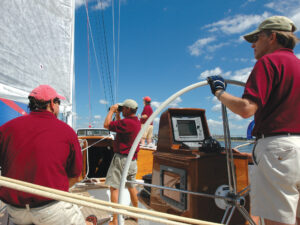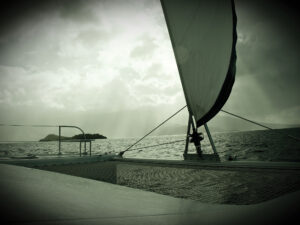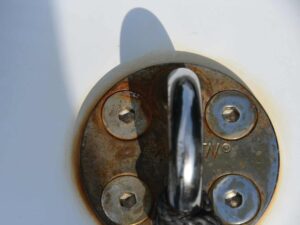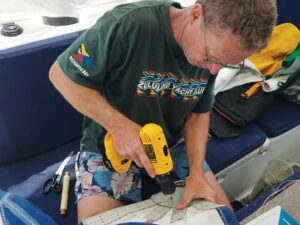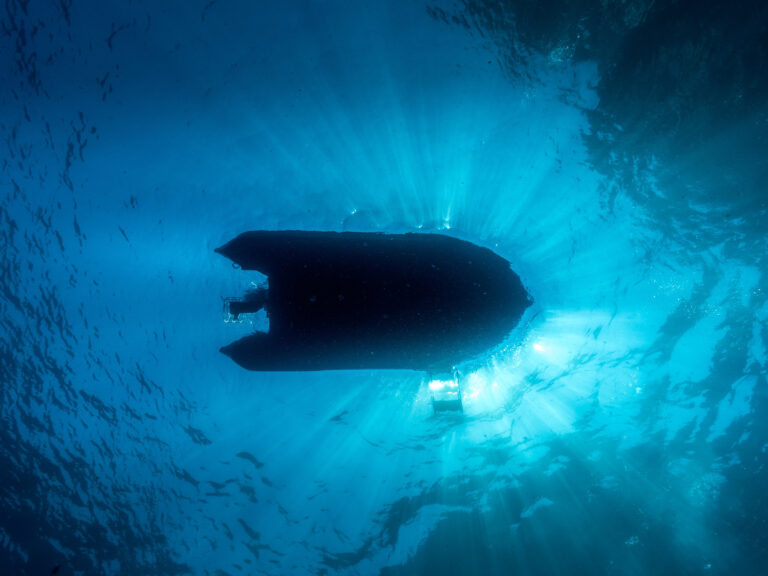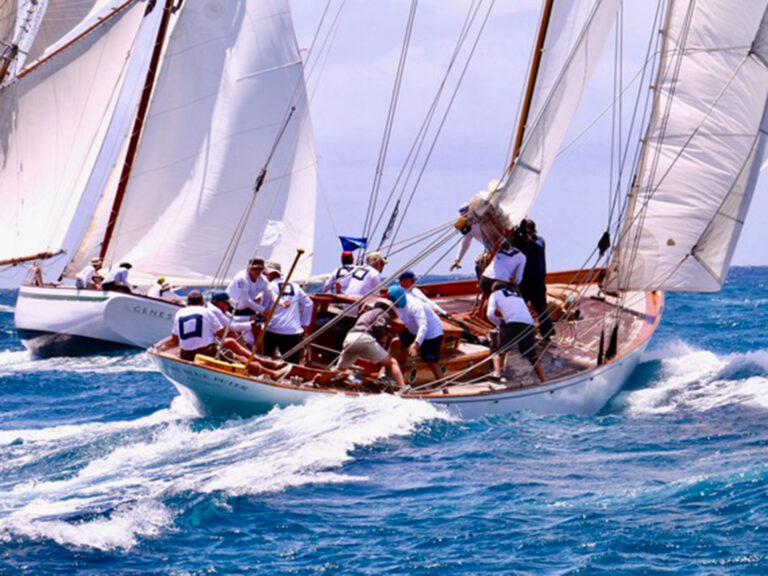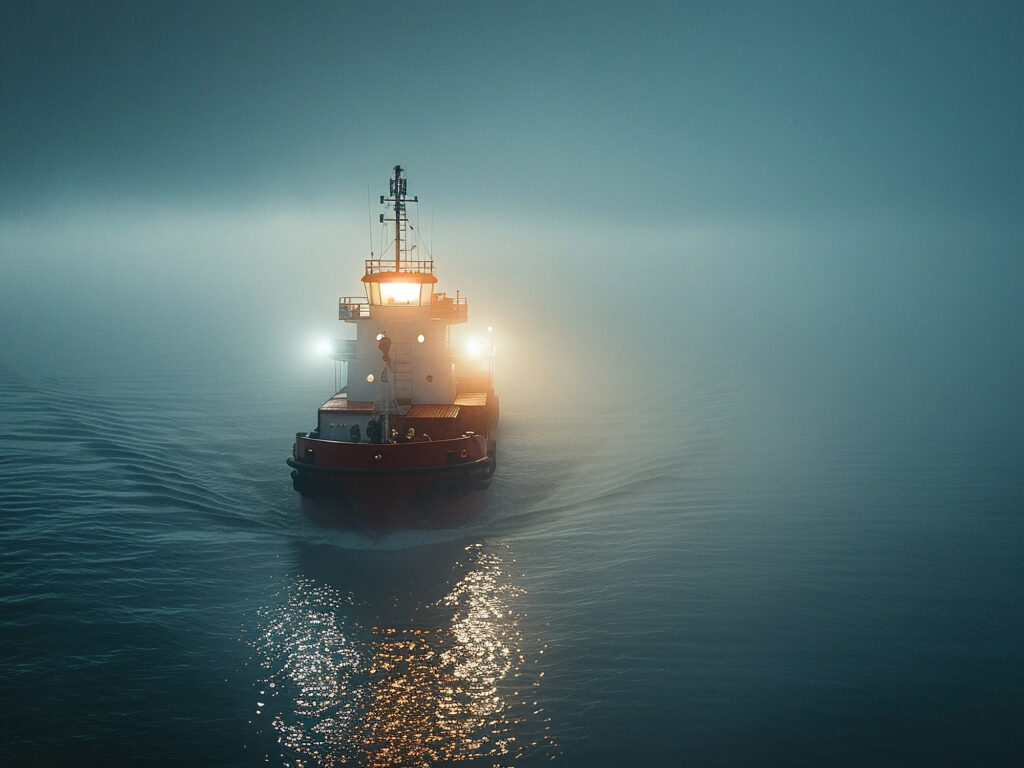
It’s foggy on a dark night. Our boat is sailing through a narrow channel at 10 knots. We hear a foghorn. Two minutes later, the horn sounds closer.
A few more horns are sounded. Out of the mist, a tugboat appears, crossing our bow at short range. As the vessel passes, I notice a hawser line extending from the stern into the water. I realize the tugboat is towing something.
Instantly, I turn the wheel and sail 180 degrees away from the tugboat. Our crew could hear the waves of an oncoming craft. We watched in horror as the faint outline of a barge slipped past.
Had I not maneuvered away, the barge would have rammed us. The sad episode took place more than 40 years ago, and I still have nightmares about what could have happened.
This near collision is a good example of why every boat should maintain a diligent lookout. In hindsight, we should have altered course earlier, when we first heard the foghorn. We also should have slowed down, communicated with the tugboat via radio, and taken careful bearings of the sound to understand the other vessel’s course.
Rules of the road are important and should be carefully followed. Common sense is the fundamental premise behind the rules that are designed to keep vessels from colliding.
In 1972, the International Maritime Organization wrote the International Regulations for Preventing Collisions at Sea, or COLREGS. The basic rules for racing yachts are the Racing Rules of Sailing. Still, there are no traffic police on the water. Sailing is “self-regulated.” Major sailboat races often use umpires, either on the water or watching GPS tracks, to make rulings, but outside of tightly controlled races, most sailors are on their own.
Mariners on all vessels are expected to follow COLREGS. Anyone wanting to receive a license to operate a vessel needs to pass a comprehensive test with a 90 percent score. Competitive sailors spend years studying the Racing Rules of Sailing to find tactical advantages. Every four years, World Sailing, the international governing body of sailing, updates the rulebook to make racing more understandable.
But overall, the basic rules are relatively easy to grasp. There are only a handful of fundamental rules that govern what should happen when boats meet.
Crossing Situations
The vessel on starboard tack with the wind coming over the starboard side of the boat has the right-of-way. A port-tack yacht shall give way and stay clear.
If two boats under power are heading on a collision course, then both vessels should alter course to starboard and pass on the port side of the boat.
If two boats under power are approaching each other at an angle, then the boat that has another vessel approaching from its starboard side shall keep clear and alter course to pass behind.
Overtaking
A faster boat passing a slower boat shall stay clear of the slower vessel.
Same Tack
When boats are sailing on the same tack, the windward boat (closest to the wind) is required to stay clear of a leeward boat.
Action by the Burdened (Give-Way) Boat
A burdened vessel that does not have the right-of-way shall take early and substantial action to stay clear. A major alteration of course helps the crew of the right-of-way boat recognize that action is being taken to avoid a collision.
Sailing in Confined Waters
Generally, a sailboat has the right-of-way over a powerboat. In restricted waters, a large vessel has the right-of-way over all vessels, including sailboats, because there is little room to maneuver.
I’ve been an officer on the bridge of naval and merchant vessels. It is frightening to see a small sailboat cross your bow and disappear. Sailors should never cross ahead of a large ship. Visibility is limited, and turning or slowing down takes a long time in a large vessel. If the crew of a large vessel believes that a problem is developing with a smaller vessel, they will sound five horn blasts.
Common sense dictates that small vessels must give large vessels room to pass safely. Vessels are required to navigate on the starboard side of a channel.
When Maneuvering
A boat that is tacking or jibing is obligated to stay clear of a boat that is sailing on a straight course.
Person in Charge
The skipper is the person in charge of a boat. The responsibility for sailing safely rests with the skipper.
Many years ago, as a cadet on a merchant training ship while steaming in the mid-Atlantic, I was sent to knock on the captain’s cabin door to alert him that we were on a close course with another vessel. I was nervous about waking him up at 0300. To my relief, he thanked me and went straight to the bridge, where he ordered a change of course.
Keep a Lookout
Good visibility is restricted on sailboats. For example, it is difficult to see to leeward through a headsail. At least one crewmember should always watch for boat traffic. This includes looking on the leeward side of the boat.
If another boat is approaching, it is the obligation of the lookout to inform the helmsperson and skipper about a potential collision. Clear communication is the key to safe passage.
Extreme Situations
If two boats appear to be heading for a collision, then both boats should take every possible action to avoid hitting. The US Coast Guard uses the term “immediate danger” when a close encounter becomes serious. Communications on a VHF radio are helpful when working to avoid a collision. In restricted waters with a lot of traffic, a VHF radio is an important asset. When two boats get close, hail your change in course and speed to the other boat.
Running Lights
The IMO requires vessels to carry lights at night, which is defined as the time between 30 minutes before sunset and 30 minutes after sunrise. Sailing vessels were first required to carry lights by an act of Congress in 1849.
The basic light package for sailing vessels is a green light on the starboard side, a red light on the port side, and a white line on the stern. Vessels smaller than 23 feet are required to carry at least a white light to signal their presence to other vessels at night.
Sailing in Shallow Water
Sailboats have a centerboard or keel to help with stability and the ability to sail a straight course. Sailboats must sail in deeper waters. It is important to stay particularly diligent when boats are navigating shallow waters and allow room for safe navigation.
Aircraft pilots are required to file a flight plan before taking off. Flight controllers monitor air-traffic control to keep people safe. There are no traffic controllers on the inland waters and high seas. Sailors are expected to be diligent on their own. —Gary Jobson

